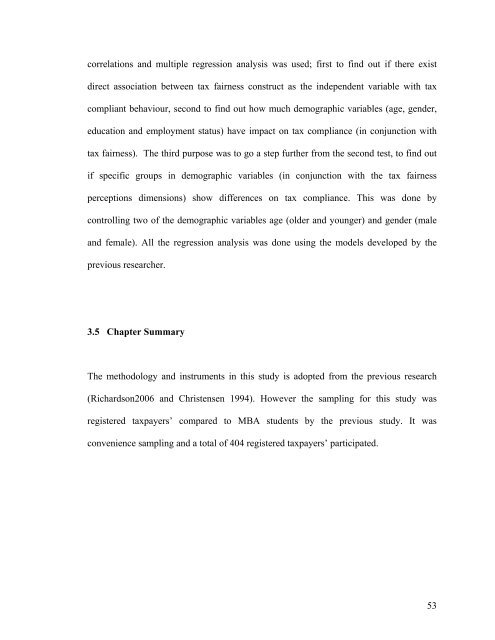1 CHAPTER 1: INTRODUCTION 1.0 Chapter ... - DSpace@UM
1 CHAPTER 1: INTRODUCTION 1.0 Chapter ... - DSpace@UM
1 CHAPTER 1: INTRODUCTION 1.0 Chapter ... - DSpace@UM
You also want an ePaper? Increase the reach of your titles
YUMPU automatically turns print PDFs into web optimized ePapers that Google loves.
correlations and multiple regression analysis was used; first to find out if there existdirect association between tax fairness construct as the independent variable with taxcompliant behaviour, second to find out how much demographic variables (age, gender,education and employment status) have impact on tax compliance (in conjunction withtax fairness). The third purpose was to go a step further from the second test, to find outif specific groups in demographic variables (in conjunction with the tax fairnessperceptions dimensions) show differences on tax compliance. This was done bycontrolling two of the demographic variables age (older and younger) and gender (maleand female). All the regression analysis was done using the models developed by theprevious researcher.3.5 <strong>Chapter</strong> SummaryThe methodology and instruments in this study is adopted from the previous research(Richardson2006 and Christensen 1994). However the sampling for this study wasregistered taxpayers’ compared to MBA students by the previous study. It wasconvenience sampling and a total of 404 registered taxpayers’ participated.53
















